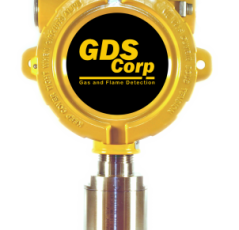Working with flammable liquids or gases can be risky when one is not well informed in this area. If flammable vapor is mixed with oxygen at proper proportions, an explosion occurs. This means if certain levels of flammable gases are mixed with certain levels of oxygen, the chances of getting an explosion will be high. Therefore, this gives a fixed ratio that could be used to gauge the safety levels within which one can work with flammable liquids. This is what is popularly referred to as the Explosive Limit.
There are two types of explosive limits as far as combustion of gases is concerned: the Lower Explosive Limit (LEL) and the Upper Explosive Limit (UEL). The lower Explosive limit can be explained in simple words as the lowest percentage of gas that can support to light a flame when exposed to a source of ignition. This means that at this level, no explosion can occur; hence it is regarded as a safe range for people working with gases. On the other hand, Upper Explosive Limit is the highest percentage of gas that will burn in air without causing an explosion. Well, with these two levels defined, it is now easy to tell that dangerous explosions that happen due to concentrations of gases can be controlled. What is the importance of LEL and UEL gas detection?
Checking for gas leakage
In the event there is a leakage in the system, one is able to know because the detection system will read higher values. This means that using LEL and UEL gas detection methods can help a lot to minimize accidents that happen due to gas leakage. This is a good way to control the occurrence of explosions in any company as the kit shows when there is a risk. As shown above, explosions can only occur if the ratio lies between LEL and UEL margins. Therefore, if anything is detected near or within that range, the engineer is able to take the right action to prevent damage.
Used to set gas intake for the internal combustion engines
The internal combustion engine is designed in such a manner that it allows proper ratios of gases to burn, while ensuring that no explosion occurs. This is the case in the diesel engines. Before the company releases the vehicle to the market, the engine is set well so as to take up certain amounts of fuel at a time to facilitate combustion. This means that the LEL and UEL margins are considered as anything between these levels could lead to a fatal explosion. Therefore, this method has contributed greatly to ensuring safety is maintained at the helm.
There are various methods that can be used to control the concentrations of an explosive gas, if potential danger is detected. One such method is using sweep gases like argon, which are unreactive and would not support any combustion to take place. Using an lel monitoring system is a cheaper option that does not require cumbersome procedures to complete. All one needs is to get the correct readings on the detector.

